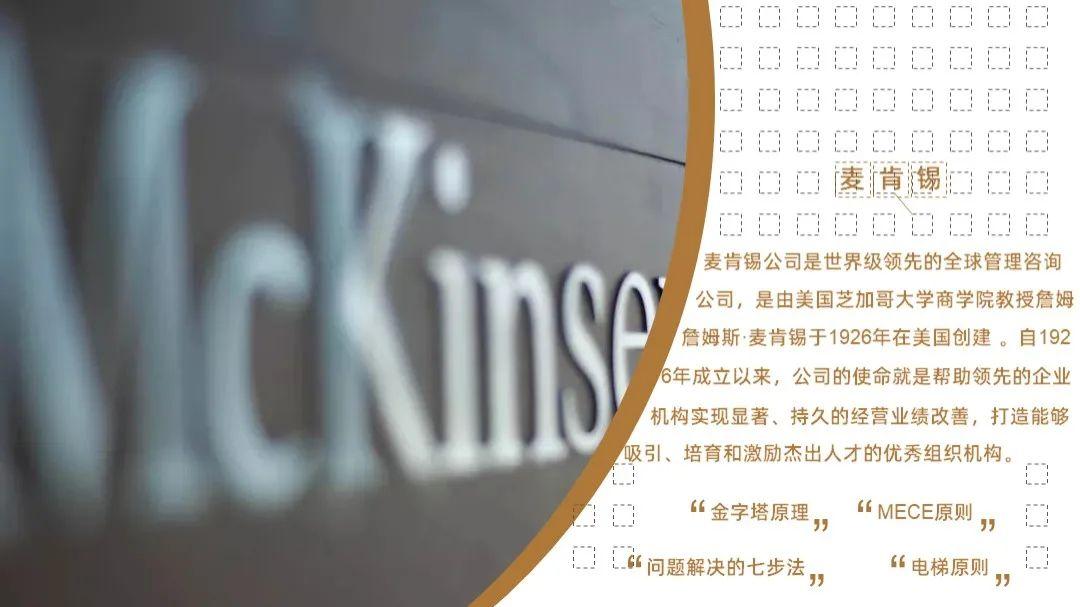
"McKinsey Work Method" is the fifth book I read this year, and the second book for reading notes. This book is a book written by Japanese Oshima Shoyu. The subtitle is 39 working habits of McKinsey elites. It mainly talks about working habits.

Shoyo Oshima was a senior partner of McKinsey Japan, mainly engaged in new business development strategy, corporate strategy and business strategy consultation. Oshima Shoyu has also written "McKinsey Efficient Work Method", "McKinsey Chart Work Method", "McKinsey Note Work Method", "McKinsey Induction Training Lesson 1" and other books.
This article was first published on the official account: Hongyan Job Records, please contact the author for reprinting.
McKinsey & Company is a world-class leading global management consulting company, founded by James O' McKinsey) was created in the United States in 1926 [1-3]. Since its founding in 1926, the company's mission has been to help leading organizations achieve significant and lasting improvements in business performance and create exceptional organizations that attract, develop and motivate exceptional people.
In the field of consulting, McKinsey is definitely a golden sign. Graduates from American universities are proud to be able to join McKinsey after graduation.
McKinsey has put forward many classic theories, such as the pyramid principle we often hear, seven steps into a poem, MECE classification principles, most From McKinsey or a McKinsey employee.

"McKinsey Work Method" mainly talks about good habits that should be developed in work. There are 6 chapters in the book, and 39 working habit. These six chapters are 1. The habit of focusing on results and solving problems; 2. Dividing the main points into three parts, the habit of elite subordinates; 3. Visualizing tasks and being good at arranging the work process; 4. Putting your own ideas in In doubt, grasp the habit of customers' psychology; 5. Approval! resonance! excitation! The habit of elite bosses; 6. The habit of controlling emotions and improving work enthusiasm.
Many Japanese culture and habits are similar to China, so many work habits in the book are also applicable to the Chinese workplace. For professionals, especially those who are new to the workplace, if they can practice according to the habitual requirements in the book, they will definitely be able to form good habits that will last a lifetime.
Choose a few habits to share with you.
1. Keep "starting from scratch"
Newton once said a famous saying, to the effect that Newton believed that the reason why he achieved such great achievements was because he stood on the on the shoulders of giants. However, Oshima Shoyu believes that in the face of problems that arise in the work, one must have a "return to zero" thinking and start from scratch, that is, follow the vines to find the root of the problem, not the point where the problem occurred.
For example, the sales volume of the company's products has declined recently. In the face of this problem, some people think that the advertising is not strong enough, so they increase the amount of advertising Delivery efforts. But the real problem is that consumers' consumption habits have changed, and the company's products are no longer suitable for market demand.
So, when encountering a problem, it is very important to start thinking from scratch and find the root of the problem.
2. Use "Eagle Eye" to analyze and find the best solution
We know eaglesFlyHigh and fast, but the eagle can see the prey in flight and accurately What is the key to catching prey? The key lies in the eagle eye, the vision that can see everything.
Oshima Shoyu believes that everyone at work should also cultivate the habit of "eagle eyes". When encountering a problem, don't immediately use your own inherent thinking habits to think, and then rush Judgment. Instead, you should think from the perspective of others, from a broader perspective.
For example, a colleague in the company is always late for work on Mondays, and some people speculate that she is playing on weekendsof too late, or Feeling unwell etc. And if you use "hawk eyes" to find the reason, you have to find it from yourself, from her colleagues, from the company, and finally find that the real reason is that she is dissatisfied with the company's position and bored. .
3. Establish "urgency" and "importance" models
The things encountered at work will not be the same, whether it is urgency or importance. If you put the same time and energy into everything, it must be worth the candle.
What is the correct way to do it?
Stephen Covey once mentioned the four-quadrant law of time management in "Seven Habits of Highly Effective People", dividing things into It is divided into four parts: urgent and important, urgent and not important, not urgent and not important, and not urgent and not important.
Because everyone's time and energy are limited, urgent and important things should be dealt with first, then non-urgent and important, and then urgent It is best not to do unimportant things, things that are not urgent and unimportant.
4. Make 3 main points in 30 seconds
Many people may have heard of the McKinsey Elevator Rule. If you meet the boss in the elevator, you only have 30 seconds to report it. How do you report it?
Some people think that 30 seconds is too short to say anything. I would like to ask you to recall, when you are watching a film and television drama, how long is the advertisement in the middle? If you look at it now, most of the commercials are 15 seconds long. But can you remember the content of the advertisement? Generally, you can remember it, why? I think apart from the creativity of the advertisement, there is another point that the slogan of the advertisement is refined enough.
So, if you use 30 seconds to report one thing, it is more than enough, but the premise is that you have to understand the content of your report refining.
How to report 3 main points within 30 seconds, you can think from the following 3 elements:
First, grasp the status quo;
Second, the explanation and reasons for the status quo;
Third, conclusion and solution.
5. Keep your desk tidy
There is an old saying in China: "If you don't sweep a house, how can you sweep the world." It means that to achieve great things, you must start from the small things around you rise.
The same goes for developing work habits. What is the easiest habit to form at work? I think it's simple and easy to keep the work desktop clean.
Some people say that tidying up the desktop every day is both troublesome and time-consuming. If you have that time, you might as well do more.
If you think about it, the desktop data is piled up, you can quicklyFind the material you need from it ? If it takes a lot of effort to find a material, can your efficiency be high?
Shoyu Oshima said that at McKinsey, he puts everything in the drawer when he gets off work, leaving only the computer on the desktop , is the most basic code of conduct.
About keeping the desktop clean, you can try breaking away.
6. The book does not need to be read to the end
Books are the best teachers at work, and they are the most convenient, time-saving, and economical teachers. Reading is something that can benefit you for life. You don't need to watch movies and TV dramas, but you must read books.
But there are skills in reading.
Adler wrote a book called "How to Read a Book". The way is also different. Some books are suitable for browsing, and some books are suitable for chewing slowly.
For example, if you want to write an article, you need to collect a lot of materials. An article cannot be completed in a short period of time. At this time, I can only browse in a hurry and extract the materials that are useful to me.
If you are studying a certain topic, you need to chew and swallow the books under this topic carefully, and thoroughly understand the book Every point of view, digest and absorb, for your own use.
A few habits in the book excerpted above are shared with you. If you are interested, you can read the whole book.

For newcomers who have just entered the workplace, I generally recommend going to a big company. Why? It's not that big companies have good salaries and benefits, but more importantly, the development of work habits. Habits accompany a person throughout his life. Good habits will make his future career smoother and smoother, while bad habits will be a stumbling block to his career.
This book is strongly recommended for newcomers in the workplace to read it, it will be of great help to develop their own habits.

If you need PPT source files, the background reply: McKinsey working method.
Previous articles
Five-step process to realize your life wishes
No materials for design? Images, illustrations, mockups, templates, inspiration, videos, all here

Articles are uploaded by users and are for non-commercial browsing only. Posted by: Lomu, please indicate the source: https://www.daogebangong.com/en/articles/detail/McKinsey%20working%20method.html

 支付宝扫一扫
支付宝扫一扫 
评论列表(196条)
测试